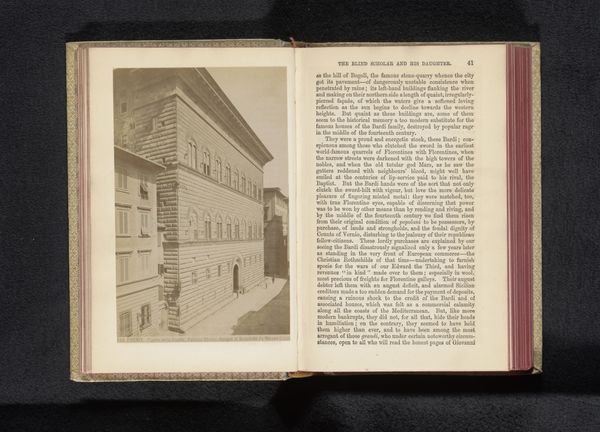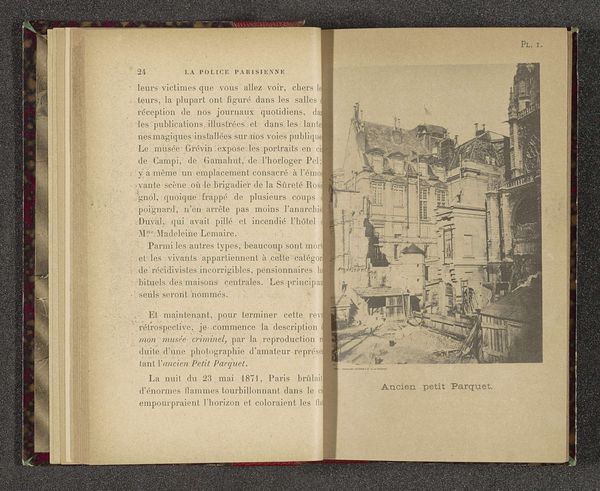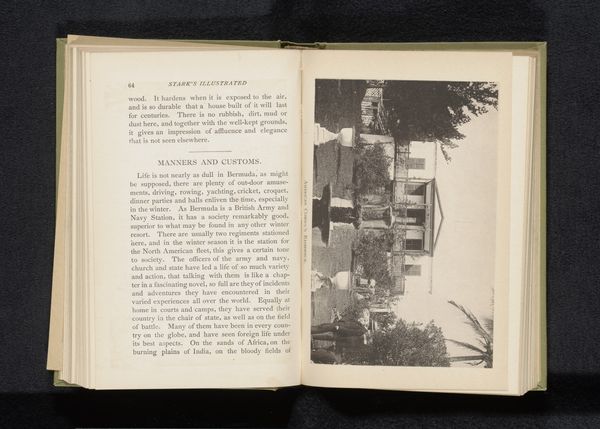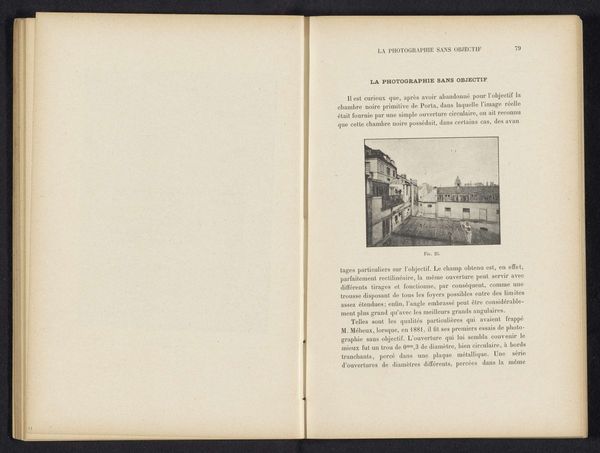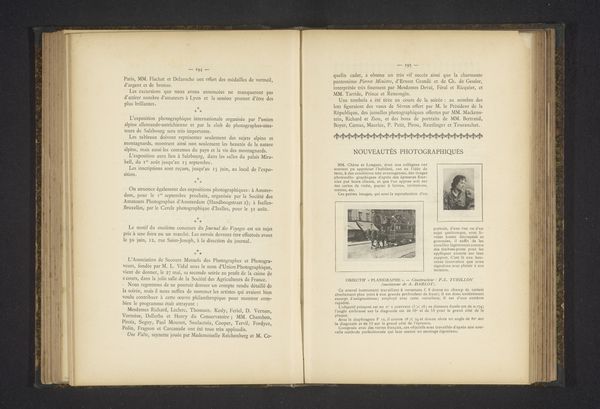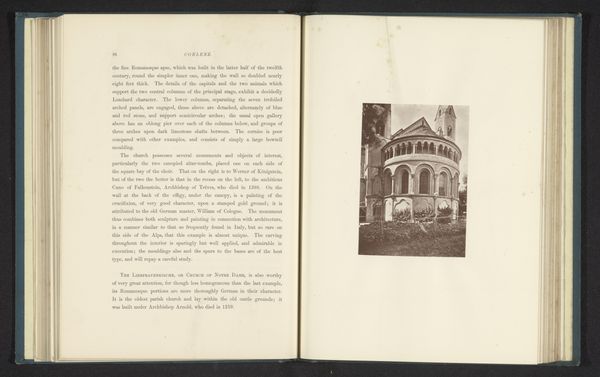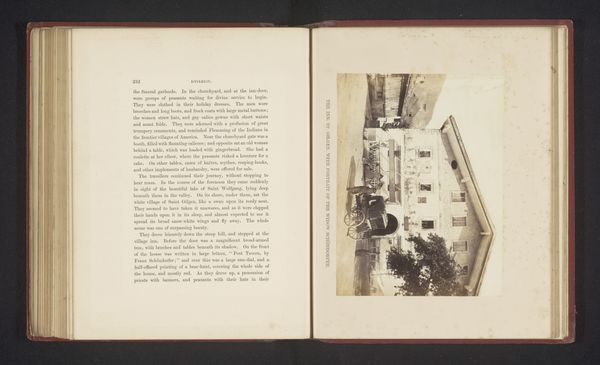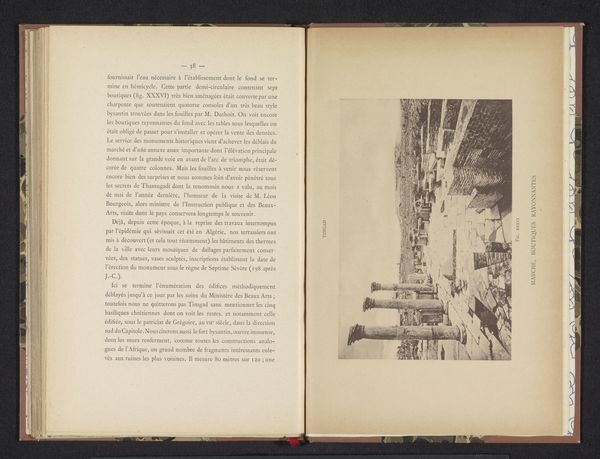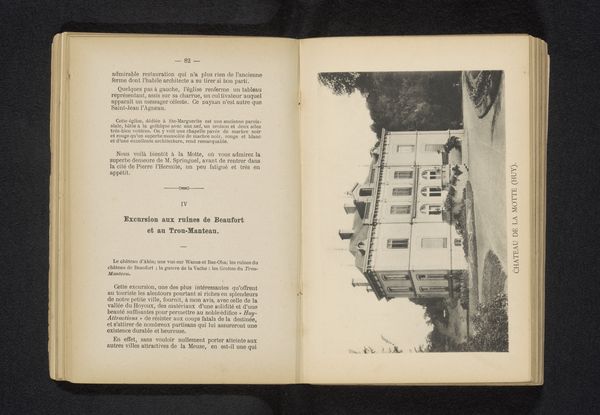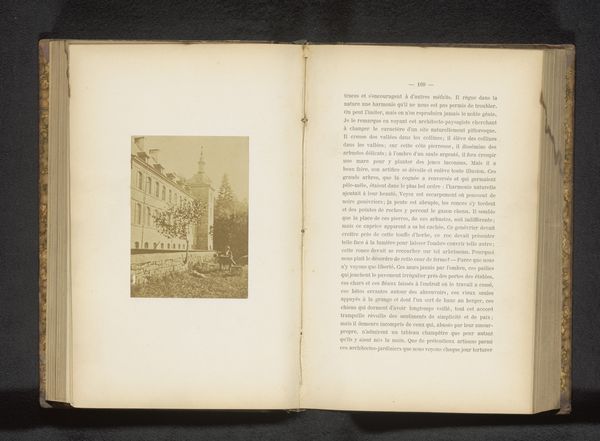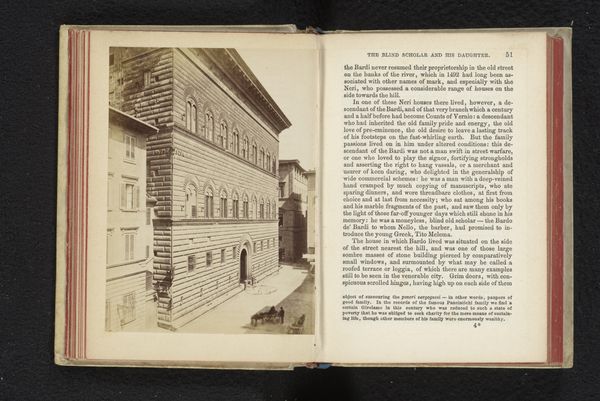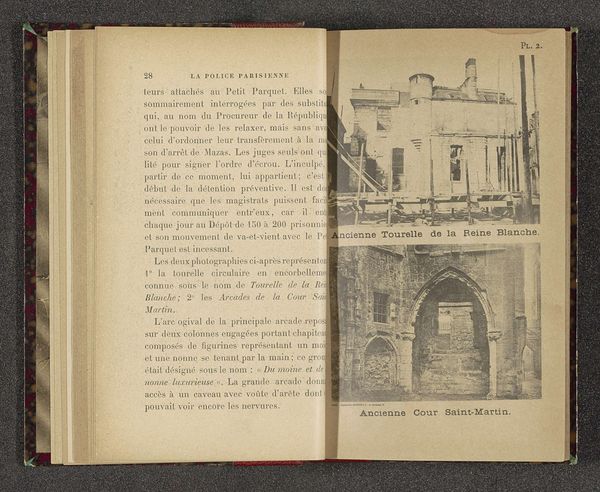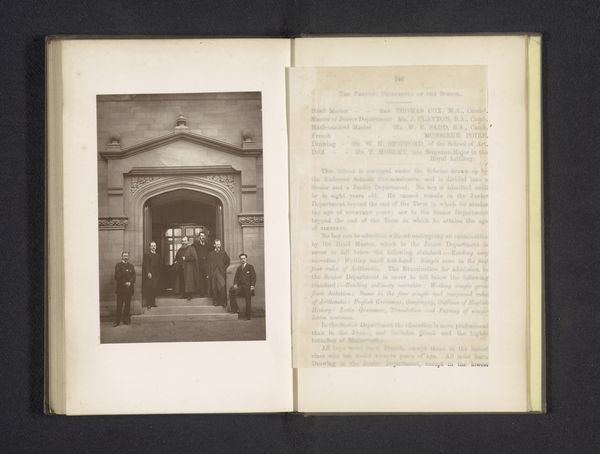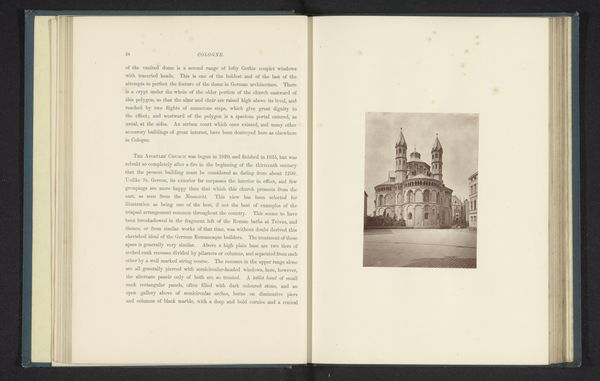
print, photography
# print
#
photography
#
coloured pencil
#
history-painting
#
watercolor
Dimensions: height 174 mm, width 105 mm
Copyright: Rijks Museum: Open Domain
Curator: I find the geometry of this piece so compelling, don't you think? We’re looking at "In- en exterieur van een lijkenhuis," translated as “Interior and exterior of a morgue.” Although created before 1890 by an anonymous hand, what's truly striking to me is how the contrasting images work together within the book’s structure. The stark lines of the building’s façade juxtapose beautifully against the cool, receding space within. Editor: Chilling is what it is. Makes me think of a stage set, ready for some dreadful performance. Morgues always carry the weight of lost stories, right? The classical exterior contrasted against the rows of these cold slabs really hits home. It’s all about finality and the brutal mechanisms of identification. The whole page feels like a historical document tinged with human suffering. Curator: That's a beautiful way of framing it, especially the "finality" you mentioned. Consider the formal relationships: the exterior promises a sense of order and perhaps even civic responsibility with those strong, balanced architectural forms. But, once we move to the interior, the linear perspective guides our eye into a space deliberately structured for the handling of death. Even the lighting reinforces a detachment and cold objectivity. Editor: Exactly! Look, even that hanging lamp, centered in the lower image, echoes the finality I feel. In literature and in the visual arts, light frequently serves as a symbol for knowledge, insight, even life itself. That lone lamp feels more like a signal than a source of comfort; cold and mechanical. Even the “salle destinee,” or the destined room for bodies, points directly to fate, a concept humans struggle with since, well, forever. Curator: An essential point regarding symbolic depth. When observing that "cold mechanical" affect, do you agree it reinforces the clinical atmosphere the artist tries so hard to convey? How that choice speaks to modernity and a specific societal relationship with mortality, emphasizing logic and analysis over ritual or emotional expressions of grief? Editor: Yes, absolutely. Considering what this all means makes the original creation date especially resonant. Before 1890… imagine the anxieties swirling around death and identity during that period, and how that era's public spaces devoted to death directly confronted these unspoken anxieties. It's truly thought-provoking! Curator: Indeed. Looking closely at both images has clarified, for me at least, the intersection of aesthetics and our culture’s attempt to manage very complex social themes. Editor: Right. Analyzing this specific visual vocabulary allows us to delve much deeper into humanity's eternal dialogue with itself.
Comments
No comments
Be the first to comment and join the conversation on the ultimate creative platform.
